11 Best first-time Europe itineraries for 1, 2, or 3 weeks
Europe is going to be very busy in the summer of 2024 as the world is back to normal and travel demand is higher than ever. One other key factor is that most European currencies are still hovering at lower levels historically compared to the US dollar, which means that Europe will feel somewhat cheap again this year. In fact, according to our World Backpacker Index, European cities like Lisbon, Madrid, and Munich are about 30% cheaper to visit than Boston, Chicago, and New York City. In other words, flying to Europe might seem expensive, but most things will be cheaper once you get there compared to the costs of visiting a large US city.
Below you’ll find 11 of the most popular and best itineraries for a first visit to Europe. Your first visit is not really the time to be different or creative, and the famous destinations tend to be popular for a reason. In other words, it’s kind of silly to visit, say, Bulgaria, if you’ve not yet been to France or Italy. I lay out the best options along with how long to stay in each place as a general guide. I also discuss Mediterranean cruises, which can actually be an amazing way to see a lot of Europe on your first visit, especially if you don’t like going back and forth to train stations and airports every 2 or 3 days.
For a bit of fun you might be interested in the cheapest 5-star hotels in Europe, which start at US$80 per night for really nice hotels. It helps show that if you choose some of the cheaper cities, you can treat yourself to some luxury that you can’t afford in most other places.
This article was last updated in March, 2024.
There are 11 starter itineraries described in detail below
- Classic London and Paris
- England and Scotland
- Paris and Italy
- Mediterranean cruise
- France, Belgium, and Netherlands
- Paris and elsewhere in France
- Italy
- Spain
- Germany
- Switzerland
- Best of cheap eastern Europe
For each itinerary there are suggestions of other destinations that are easy to add on to the main cities.
Note: This article was most recently updated in March, 2024
Building the best itinerary for your first trip to Europe
Below there are 11 popular itineraries for one week in Europe. If you’ve only got a week then choose one of them and assume you’ll return again to conquer more of this amazing part of the world. If you’ve got more time then you can choose from some of the top add-on suggestions for each one.
Start in the most famous cities
Your first visit to Europe is no time to try to be different or edgy. I recommend that you focus on these 5 great cities before you start branching out into cheaper or more obscure places.
Keep your travel days to a minimum
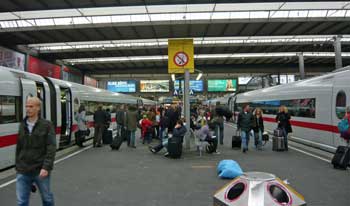
Spend 3 (or 4) nights in almost every major city
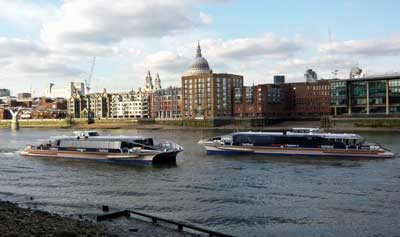
So many first-time visitors are initially planning on spending only 1 or 2 nights in major cities that I wrote a detailed explanation of why 3 nights is ideal for almost all European cities, even if you want to see as much as possible.
3 (or 4) nights will be enough for any city on your first trip
Most first-time visitors are tempted to move too quickly, but it can also be a mistake to move too slowly. It’s really amazing how much you can see in two full sightseeing days. If you spend too long in one city you’ll end up seeing things that are way down your list, while you could be in another city seeing things at the top of your list there.
Choose cities that are easy to reach from each other
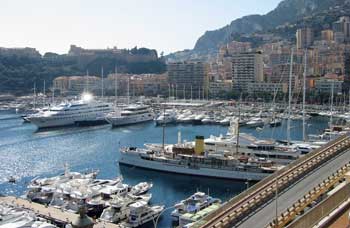
For your first trip it’s best to visit cities that are no more than a 5-hour train ride apart.
Choose cities that are connected by reasonable train rides rather than flights
To build on the point above, finding cheap flights within Europe is easy, but train travel is about a million times more enjoyable and less stressful. You’ll enjoy the train rides almost as much as the cities, so focus on places that are within 5 hours of each other by train.
Start with one of the classic itineraries below, and then add to it if you have more time
If you only have 7 days then you’ll find a list below of classic itineraries that are well-suited to a first visit to Europe. Hopefully you have more than 7 days though, and if you do you can add in one or more of the suggested add-on cities to build an itinerary that appeals most to you.
Best 1-week itineraries for the first time in Europe
Itinerary 1: Classic London and Paris
Fly into either city and take the 2-hour Eurostar train between them
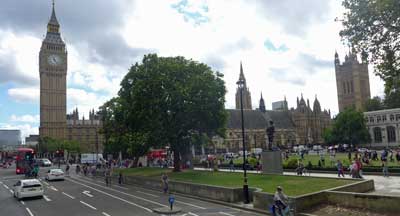
London highlights
- Big Ben and Parliament
- Westminster Abbey and St. Paul’s Cathedral
- Tower of London and Tower Bridge
- West End shows (Broadway equivalent) and classic pubs
- Buckingham Palace and Windsor Castle
Paris is actually far more beautiful than London and the food is famously much better as well. Since Paris gets so many tourists from non-French speaking countries, it’s easy to get by on just English, and the Metro system makes it fast and easy to get around. The architecture of both cities is amazing from the Tower of London, Big Ben, Westminster Abbey to the Louvre and the Eiffel Tower. These cities each pack a huge punch and they are very different from each other as well. Actually, England is arguably the best choice for your first trip to Europe.
Paris highlights
- Eiffel Tower
- Louvre Museum and Museum de Orsay
- Arc de Triomphe and other monuments
- Montmartre neighborhood and Sacré Coeur Cathedral
- Probably the world’s best affordable restaurants and wine
Best add-ons to London and Paris
- Edinburgh (2 or 3 nights, from London)
- Amsterdam (2 or 3 nights, from Paris)
- Bruges and Brussels (2 nights, from Paris)
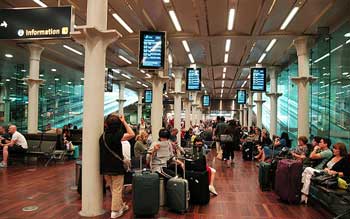
>>>Best one-week London and Paris itinerary in detail
>>>Check London hotel deals
>>>Check Paris hotel deals
Itinerary 2: England and Scotland
- London (3 or 4 nights)
- York (1 night)
- Edinburgh, Scotland (2 or 3 nights)
- Inverness, Scotland (2 or 3 nights)
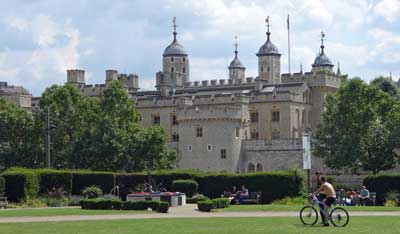
York is a small Roman city with intact city walls and one of the most famous cathedrals in Europe. Edinburgh is not only the capital of Scotland, but it’s easily the second most interesting city in all of Britain. If your time is short, skip York and spend more time in Edinburgh.
If you prefer to focus on the south of England on your first trip then the best option is to go to Bath or nearby Bristol after London. Bath is another of England’s top destinations and it’s a gorgeous city that has been a spa resort for many centuries. It’s also reasonably close to Stonehenge. You can also easily get to Cornwall in England’s southwest corner from Bath, and that’s a whole different and fascinating experience (with nicer weather than up north).
If you’ve got more than a week and want to spend more time in Scotland, especially in the summer months, the place to head to is Inverness. It’s a small town that is considered the gateway to the Scottish Highlands, but it’s an interesting and charming place on its own. You can take day-trips by bus to the highlights of the Highlands including the Isle of Skye and Loch Ness. Between you and me, it’s better to minimize time in Loch Ness or skip it altogether because it’s not one of the more photogenic parts of Scotland and the monster has always been a hoax.
Travel times between the recommended places
- London to York by train: 2 hours
- York to Edinburgh by train: 2.5 hours
- London to Edinburgh by train: 4 hours
- Edinburgh to Inverness by train: 3.5 hours
- London to Bath by train: 85 minutes
Best add-ons to England and Scotland
If you think you want to spend your whole trip in Britain you should have a look at our article on the best itineraries in England, Scotland, and Wales.
>>>Check London hotel deals
>>>Check Edinburgh hotel deals
Itinerary 3: Paris and Italy
- Paris (3 or 4 nights)
- Venice (1 night)
- Florence (2 or 3 nights)
- Rome (3 nights)
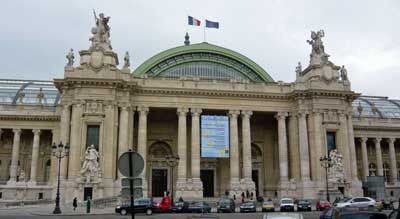
From Paris you can easily fly to Venice (or nearby Treviso) where you should try to spend about 24 hours. Venice is small enough to see in a full day, and so crowded that most people are satisfied to leave after that day. The key is to stay in the main part of the main island so you can enjoy Venice before the cruise passengers and day-trippers arrive, and also after they leave for the day. Two nights in Venice would not be wasted time, and it’s possibly the most gorgeous city in the entire world, but you can see the best of it in a bit over 24 hours.
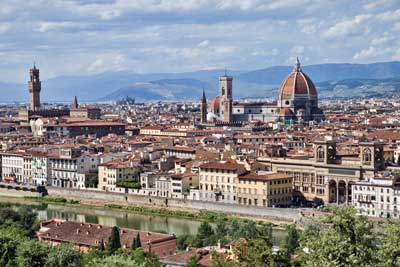
Rome also lives up to the hype and spending a day in the Vatican City will be a highlight even for non-Catholics, but it’s also a crowded and busy city so three days is usually enough for most people. Similar to Paris, Rome is an unusually beautiful city from almost any angle when you are in the historical center. You’ll walk through a stunning piazza (town square) and then turn a corner and you’ll see gorgeous buildings or public statues that are as nice as anything in the museums. Seriously, it’s worth a visit.
Paris to Venice flight: 1 hour 35 minutes
Venice to Florence by train: 1 hour 53 minutes
Florence to Rome by train: 1 hour 16 minutes
You can of course instead fly from Paris to Rome and then go north to Florence and then to Venice and fly home (or back to Paris) from there, and it would be just as enjoyable.
Best add-ons to Paris and Italy
France
- Nice/Cannes/Monaco (2 or 3 nights)
- Avignon (2 nights)
- Bourges (2 nights)
- Bordeaux (2 nights)
- Aix-en-Provence (2 nights)
- Reims (2 nights)
- Dijon/Burgundy (2 nights)
Italy
- Milan (1 or 2 nights)
- Lake Como (2 nights)
- Siena (2 nights)
- Cinque Terre (1 night)
- Naples/Sorrento/Amalfi Coast/Pompeii/Capri (3 to 5 nights)
- Sicily (3 to 4 nights)
>>>Much more information in this article about the best France and Italy itineraries
>>>Check Paris hotel deals
>>>Check Venice hotel deals
>>>Check Florence hotel deals
>>>Check Rome hotel deals
Itinerary 4: Mediterranean cruise
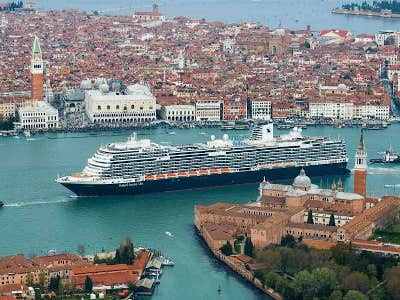
In spite of the reputation of cruises to be floating buffets, they can actually be an excellent way to visit a great number of amazing European cities in a short time. The ship typically is in port from the early morning until mid evening, often giving you the opportunity to have dinner in the city (unlike Caribbean cruises). Better still, the cruise ports are often near the center of town, so you can just walk off the ship and do sightseeing on foot or by public transportation.
Mediterranean cruises usually start at 7 nights but can go up to 3 weeks, which can provide an amazing tour of the entire region without having to pack and repack your bags more than once. They also can provide excellent value, especially compared to the price of taking trains or flights and finding new hotels in every destination.
Most popular Mediterranean departure ports
Barcelona, Spain – It’s an easy port to reach. Ships generally go from Barcelona with stops in France and then Italy.
Rome (Civitavecchia), Italy – The port isn’t very close to Rome, but it’s easy to get back and forth. Ships go west to France and Spain as well as south around the tip of Italy and then on to Croatia, Venice, and to Greece.
Venice, Italy – The cruise ships no longer dock close to the best tourist areas, but it’s easy enough to visit Venice for a day or two before boarding a ship. Ships starting in Venice go south and then head west and to Rome and then to France, or they go south to Croatia and then head east to Greece.
Athens, Greece – The cruise port of Piraeus is just south of Athens and easy to reach. Ships from Athens usually head west towards Croatia, Italy, France, and Spain, but there are also ships that visit Greek islands and Turkey.
>>>Check for deals on Mediterranean cruises
Alternative to consider: a river cruise
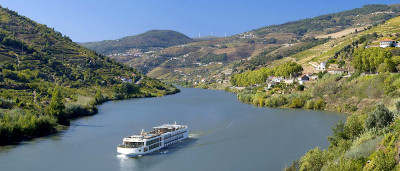
Amsterdam, Budapest, and Prague are some of the most popular river cruise ports, but there are dozens of others including many smaller towns in France where few other tourists will be when you stroll off the ship. There is little or no entertainment on the river cruise ships, but passengers don’t miss it because the entire day and into the evening is spent just steps from local cultural offerings and restaurants.
>>>Check for Europe and river cruise deals
Itinerary 5: France, Belgium, and Netherlands
Paris to Brussels: 1 hour 22 minutes
Brussels to Bruge: 58 minutes
Bruges to Amsterdam: 2 hours 45 minutes
Amsterdam to Paris: 3 hours 17 minutes
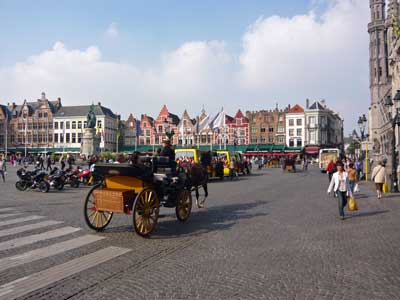
Spending 4 nights in Paris and 3 nights in Amsterdam would be a great trip, but if you want to see something else you’ve got a couple options in between. My advice is to spend an afternoon looking around the Grand Place (main square) in Brussels and then hop a 58-minute train ride to Bruges for a night or two. Brussels isn’t a great tourist city, but Bruges really is so it’s a better option for most people. Whatever you choose out of this group, you can be back in Paris on another high-speed train for your flight home.
Best add-ons to France, Belgium, and Netherlands
- Luxembourg City (1 or 2 nights)
- Cologne, Germany (1 or 2 nights)
- London (3 or 4 nights)
- Interlaken, Switzerland (2 or 3 nights)
>>>Check Paris hotel deals
>>>Check Bruges hotel deals
>>>Check Amsterdam hotel deals
Itinerary 6: Paris and elsewhere in France
- Paris (3 or 4 nights)
And a choice of:
- Nice/Cannes/Monaco (2 or 3 nights)
- Avignon (2 nights)
- Bourges (2 nights)
- Bordeaux (2 nights)
- Aix-en-Provence (2 nights)
- Reims (2 nights)
- Dijon/Burgundy (2 nights)
- Normandy (2 nights)

While Nice is a wonderful tourist city for a look at the French Riviera, the other larger cities of Lyon and Marseilles are probably better saved for a future trip because they are light on key sights compared to many smaller towns. Wine lovers can rent a car or take trains into Bordeaux or Burgundy. Since you can get between most of these towns by train in 2 hours or less, spending only 2 nights in each one is a reasonable option if you want to see a lot in a short time.
Normandy is an interesting choice and easy to reach in only about two hours by train from Paris. Some visitors like to see the famous WWII beaches and memorials, while others (especially in summer) like to check out one or more of the beach-resort towns. Deauville is one of the more famous of those, and it’s also famous for its horse race track and as one of the epicenters of the industry in Europe.
Best add-ons to Paris and elsewhere
- More France, of course
- London (3 or 4 nights)
- Interlaken, Switzerland (2 or 3 nights)
- Amsterdam (2 or 3 nights)
>>>Check Paris hotel deals
>>>Check Nice hotel deals
Itinerary 7: Italy
Rome to Florence: 1 hour 16 minutes
Florence to Venice: 1 hour 53 minutes
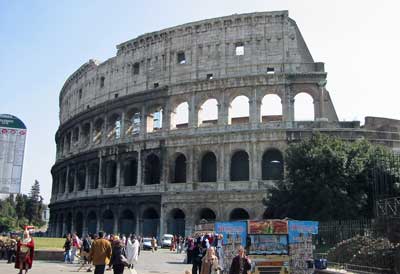
Venice is small enough that you can see the main sights in about 24 hours, and it’s so insanely crowded that many people tire of it after about a day as well. It’s better to pay more for a hotel to be on the main island and visit quickly than to save money with a hotel on the mainland where you’ll be in crowds going back and forth as well. Florence is the most relaxing of the 3, and also a great base for side trips to Pisa, Siena, and Cinque Terre, just to name a few.
Going to Italy? Here are the best first-time Italy itineraries for 3 days to 2 weeks (in much greater detail)
Best add-ons to Italy
- Milan (1 or 2 nights)
- Lake Como (2 nights)
- Siena (2 nights)
- Cinque Terre (1 night)
- Naples/Sorrento/Amalfi Coast/Pompeii/Capri (3 to 5 nights)
- Sicily (3 to 4 nights)
>>>Check Rome hotel deals
>>>Check Florence hotel deals
>>>Check Venice hotel deals
Itinerary 8: Spain
Madrid to Barcelona: 2 hours 30 minutes
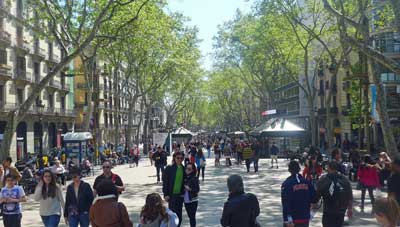
A huge part of Spain’s tourism industry is built around its southern beaches and islands such as Ibiza, Mallorca, and Tenerife (in the Canary Islands). For most people it’s best to ignore those places on your first trip because none of the beaches are special enough to spend days on them compared to the culture of the cities.
Best add-ons to Spain
By popular demand, I’ve added a full article on where to go in Spain with itineraries from 7 to 10 days up to two weeks.
>>>Check Madrid hotel deals
>>>Check Barcelona hotel deals
>>>Check Lisbon hotel deals
Itinerary 9: Germany
Berlin to Munich: 6 hours 2 minutes
Munich to Rothenburg ob der Tauber: 2 hours 56 minutes
Munich to Füssen: 2 hours 4 minutes
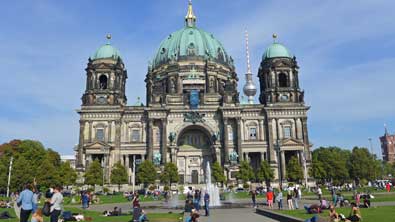
Those two cities are the keys to a Germany visit, and after that you’ve got a wide variety of choices. I cover most of the popular choices in my article on where to go in Germany, which covers several smaller towns that are major highlights.
Best add-ons to Germany
- Cologne (1 or 2 nights)
- Hamburg (2 or 3 nights)
- Amsterdam (3 nights)
- Prague (3 nights)
- Salzburg (2 or 3 nights)
- Vienna (3 nights)
- Interlaken, Switzerland (3 nights)
- Lucerne, Switzerland (2 or 3 nights)
>>>Check Berlin hotel deals
>>>Check Munich hotel deals
Itinerary 10: Switzerland
- Interlaken (3 nights)
- Bern (1 night)
- Lucerne (3 nights)
Zurich Airport to Interlaken: 2 hours 10 minutes
Interlaken to Bern: 53 minutes
Bern to Lucerne: 1 hour 50 minutes
Lucerne to Zurich Airport: 1 hour 3 minutes
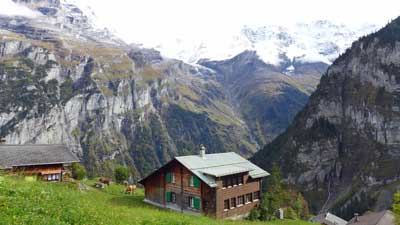
Interlaken is the best hub for the most dramatic Alps views and experiences. The one-hour cable car ride up to the Schilthorn observation deck is something you’ll never forget, and the only thing that might be more dramatic is the train ride up to the Jungfraujoch station, which is the highest in Europe. Lucerne is almost as beautiful with a scenic lake at its heart and also great mountaintop views nearby. If you do want to see a Swiss city then the capital of Bern is the most interesting and photogenic on a short visit. Read more about where to go in Switzerland for even more ideas.
Best add-ons to Switzerland
>>>Check Interlaken hotel deals
>>>Check Lucerne hotel deals
Itinerary 11: Eastern Europe’s best cheap cities
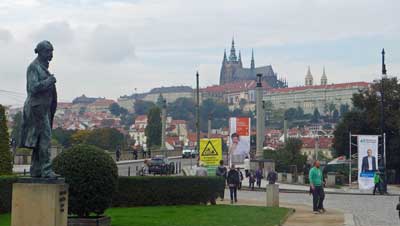
Each of these cities is beautiful and historic, but English is less widely spoken so they can also be quite a bit more challenging for a first-time visitor. Another difficulty is that the trains between them are still quite slow compared to the high-speed rail in the West, so it takes most of a day from one to another, and a bus is often a better choice. I cover this best cheap Europe itinerary more fully in the linked article.
Prague to Budapest: 6 hours 41 minutes
Budapest to Krakow: 9 hours 54 minutes (flying might be better)
Best add-ons to cheap Eastern Europe
- Cesky Krumlov, Czechia (2 nights)
- Ljubljana, Slovenia (2 or 3 nights)
- Split, Croatia (3 nights)
- Belgrade, Serbia (2 or 3 nights)
- Sarajevo, Bosnia and Herzegovina (2 or 3 nights)
- Sofia, Bulgaria (2 or 3 nights)
>>>Check Prague hotel deals
>>>Check Budapest hotel deals
>>>Check Krakow hotel deals


Hi Rger, I have seen the Alps from Switzerland earlier last summer. I did Schilthorn and Jungfrau both aprat from Mt Titlis. This summer I am gonna be there at Salzburg for three days. Do you recommend THE DACHSTEIN GLACIER ? If yes, can that be completed in a day from Salzburg ?
Nawai,
I hope you enjoyed Switzerland. I’ve yet to make it to Dachstein Glacier myself, but I’ve read about it and heard good things. It looks like it takes only 90 minutes to reach from Salzburg, so it’s an easy and popular day trip from there. Have a great trip. -Roger
is it possible to see Ireland,London,Paris,Brussels,Germany,Amsterdam
in 8 days. coming in from America..what would be the best route to arrive into and return from.
Linda,
It’s possible to do that if your main goal is to never stop moving and then be able to say you’ve visited those two countries and four cities, but I wouldn’t recommend it if you really want to enjoy your trip. If you have 8 days in Europe I’d focus on 2 or possibly three cities (rather than countries) and hopefully ones that are easy to reach from each other. The quickest version of that I would recommend is fly to London for 3 nights then take the Eurostar train to Paris for 3 nights and then take the fast train to Amsterdam for your last two nights and fly home from there. I hope that helps. -Roger
Hi Roger. First of all thank you very much for youf detailed itinerary. I am planning for 2 weeks in Eastern Europe. I would really appreciate if you could help me with itinerary if I start my journey from Sofia to Bosnia then to Croatia then Slovenia then finally to Budapest , Prague n Kraków.
Is 2 weeks enough to a cover above places.
Does above itinerary is fine ?
Thank you every much in advance for your reply.
Vijay,
I strongly recommend 3 nights in just about any city you visit, so in 14 days I would try to plan 5 cities. Another challenge you’ll have is that the train service in Bulgaria and Croatia is slow and spotty, so most people get around on long-distance buses. Even if there are trains they only go as fast as cars, so it can take 4 to 8 hours to get between some of those cities. With that in mind you really don’t want to buy spending one day sightseeing and every other day on buses or slow trains.
You should really choose 5 cities that interest you most rather than countries. My recommendation for Croatia is Split because it’s as beautiful as Dubrovnik but also bigger, cheaper, and easier to reach. Sarajevo is a great stop in Bosnia and Herzegovina. Sofia doesn’t have many notable sights, although it is a pleasant place with some interesting Roman ruins. Budapest, Prague, and Krakow are all fantastic, but again, it takes time to get between them all. Once you have 5 cities on your list you can figure out the best route between them, and maybe adjust your selections to minimize travel time and cost. I’m happy to help if you have other questions. -Roger
Thank you Roger for your “quick” reply. Can you please advise for 14 days how I should plan to visit Italy and Switzerland. If you can make day to day plan that would be really helpful. Please
Thanks in advance
Hi Roger,
If you had to do 1 week in Europe in July which places would you recommend for 1st timers? My top choice was Italy for the monuments, culture and food but it seems it will be too hot in mid July. I am considering paris + london or Paris + amsterdam.
Sneha,
Italy in mid July could be a scorcher, and most of the top sights are outdoors as well, so I think you might save that for a future visit. London almost never gets very warm and Paris is usually fairly mild in summer as well. I think I’d do just those two if I had a week, but Paris and Amsterdam work well together as a pair and Amsterdam has mild summers as well. So I’d recommend London and Paris and of course you can get between them on the Eurostar train, but Paris and Amsterdam would also be a great choice. Let me know if you have any other questions. -Roger
Hi Roger, my husband and I went to Paris and Rome a couple years ago, and we loved it very much. We would want to go back to Europe and explore other cities. Which ones would you recommend, now especially we have a 15-month old baby to bring with? There is so much to see and so many countries to visit, would you think we should spend more time exploring other cities in Italy (Venice, Florence) or spend it all in Spain or Germany or other countries? I am thinking of 1-2 weeks for this second trip. Thanks.
Sophia,
Paris and Rome are both excellent cities for a first trip and I can see why you are anxious to go back. As I mention often, I highly recommend spending 3 nights in each city you visit with only a few exceptions, so where you go really depends on how long you want to stay. If you have only a week I’d probably pick 2 cities and maybe a third for a day trip, but if you have two weeks you could do 5 cities comfortably. Since you’ve done France and Italy I think it might be good to try something different so I think the idea of Spain (Barcelona and Madrid plus whatever else you have time for) could be good, or you could focus on Amsterdam and Berlin and then whatever else you find interesting and have time for. The suggested itineraries in the article above should give you some ideas for cities that group well together. See which one sounds most interesting to you and I’ll be happy to help you work out the details. -Roger
Hi Roger, Thank you so much. Truly appreciate it. We will stick to Amsterdam for this trip and maybe do Nice and Monaco another time. Shefali.
HI Roger,
Thank you so much for your earlier reply. We are planning a one week trip to Paris and Amsterdam in mid June. We are travelling with two kids, aged 9 and 5. We were wondering if we could make a trip to Nice and Monaco from Paris instead of going to Amsterdam. Would you recommend that instead of Amsterdam. Also what is the best way to travel to Nice and Monaco from Paris. Would like to know what you think. Thank you again.
Shefali,
The train from Paris to Amsterdam is about 3 hours 15 minutes and the train from Paris to Nice is a bit under 6 hours. From the Nice train station it takes about 20 minutes to arrive in the Monaco train station, so it makes for a great day-trip (hotels there are insanely expensive). June would be a pretty good month for Nice because it will be nice weather and not totally packed like it gets in July and August. The beach in Nice is smooth rocks so it’s not very nice if you are used to sand, but there are sandy beaches in nearby Cannes and a few other places close by.
Personally, I think Amsterdam would be way more entertaining for the kids, and it’s actually very easy to avoid the more adult-oriented parts of Amsterdam. Amsterdam is one of the world’s most beautiful cities and it’s unlike anything you’ve ever seen. Nice is nice enough, but it’s more of a place to relax and sit on the beach if you don’t mind the rocks. There are good museums there and excellent food, but I’m not sure how much the kids will appreciate those. However, if you decide to go to Nice I’m sure the kids would have a good time and remember it forever. And Monaco is also an amazing place to see in person at least once. I hope this helps. Let me know if you have any other questions. -Roger
Hi,
I was looking for some advice regarding a plan we had in mind. We are a family of 4 & have 15 days wanting to travel Germany, Austria & Switzerland.
We have native friends in Germany & Switzerland although we wont be staying with them. I havent really seen itineries anywhere for these 3 countries exclusively. we will be travelling to europe more in the years to come but we want to visit these as a family member would be going to Germany to study next year. Is it wrong for us to plan these 3 countries? will we miss out a better trip? Can these 3 countries still make the time & money worth it?
Would love to have your insight on the matter..
Nimish,
You can definitely have a wonderful trip to those three countries in 15 days, but of course you’ll be missing quite a bit in that short amount of time. For Switzerland I’d say the shortest worthwhile visit would be 3 days in the Interlaken area, which is discussed in detail in my article on where to go in Switzerland on a short trip. If you add two more days I’d spend those in the Lucerne area.
As for Austria, the major highlights are Vienna and Salzburg. I normally recommend 3 nights in each of those cities, but if you are in a hurry you could do 2 nights in Salzburg, partly because there are fast trains between them so your transit day will still allow some sightseeing.
For Germany the biggest draw is Berlin, and I’d do 3 nights there at a minimum. It’s a bit remote from the others, but it’s worthwhile and the trains between the cities are fast in that part of Europe. The second biggest draw in Germany is Munich, which is also very close to Salzburg (about 90 minutes by train). There are quite a few other places to go in Germany to consider and that link should help you figure out what interests you most.
So as you can see, it’s all a matter of deciding on your priorities and what you for sure want to see and what you are able to save for future visits. As mentioned, train service in that part of Europe is fast and reliable, and tickets are reasonably priced if you buy them at least a month or so in advance. Let me know if you have any other questions. -Roger
Hi Roger – Thanks for all of the great information. My husband and I plan on taking our two young adult children and two of their friends to Europe the last week of July and first week of August. We let the kids decide where they wanted to go and the list they came up with is a stopover of 2 nights in Iceland, Barcelona, Paris, London, and Dublin. Because of the tight schedule we thought it best to just see major city highlights. Our family has been to Europe several times but the two friends traveling with us have not. We’ve seen London and Dublin but not Paris or Barcelona. None of us have seen Iceland. Thoughts? Recommendations? I’m worried it’s just going to be too hectic and we might need to drop a city. Also we’re picking up a large chunk of the tab so need to keep cost in mind too. Hate going at high tourist season but they all have school and work schedules we had to work around.
Judi,
That is indeed a popular time to travel, but at least you’ll get the best weather of the year. Iceland is amazing and it’s all about the scenery. If I were you I’d rent a car at the airport and skip Reykjavik altogether and drive to Vik or possibly Hofn and then spend the next night in Vik. The southern coast has the most interesting natural sights, and the ones that are outside of the capital area are far less crowded and generally more dramatic as well.
You’ll obviously have to fly into Ireland and another option would be to fly into Shannon Airport and drive to Galway or some other town. In my opinion Dublin is just okay but the Irish countryside and small towns and castles are magical. Since you’ve been to Dublin before you might just spend 3 or 4 days elsewhere in the country? Then you could fly to London and after 3 or 4 days take the Eurostar to Paris for 3 or 4 days. If you get there after August 1 you’ll find Paris to be partly empty because most of the office workers leave the city for the whole month. August is actually a great time for Paris and nearly everything is still open, but with smaller crowds. You can take a train from Paris to Barcelona in 6.5 hours, and that would be far more pleasant than flying, and it would take about the same amount of time from city center to city center. Barcelona is now one of Europe’s most crowded large cities with tourism, but it’s still very nice and worth a visit. As long as you have at least 3 nights for each of those stops, I think you’ll be fine. Let me know if you have any other questions. -Roger